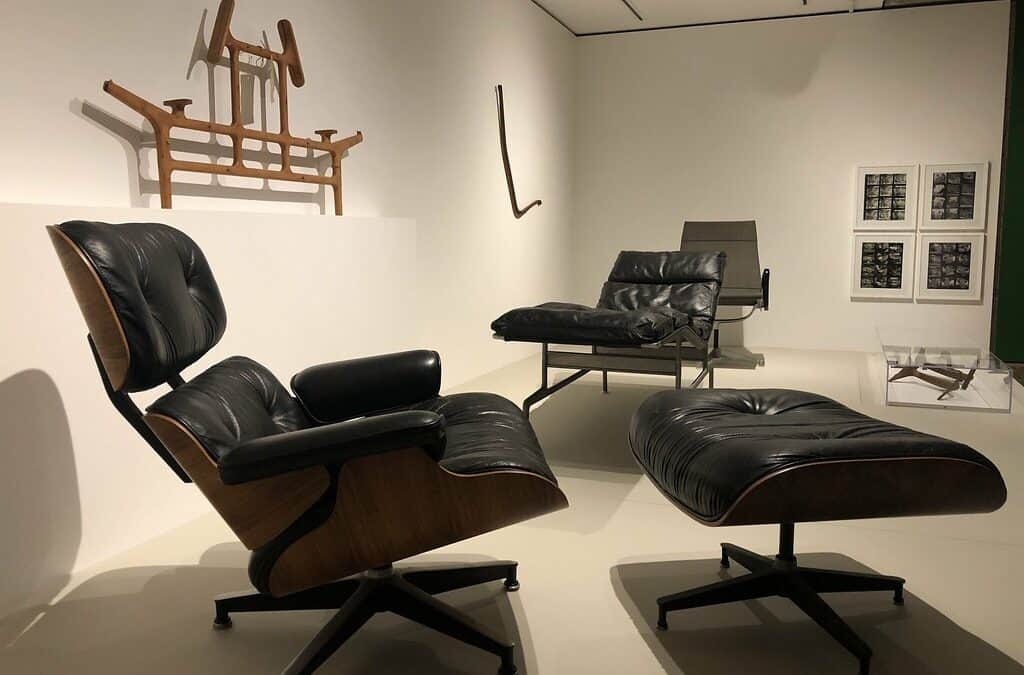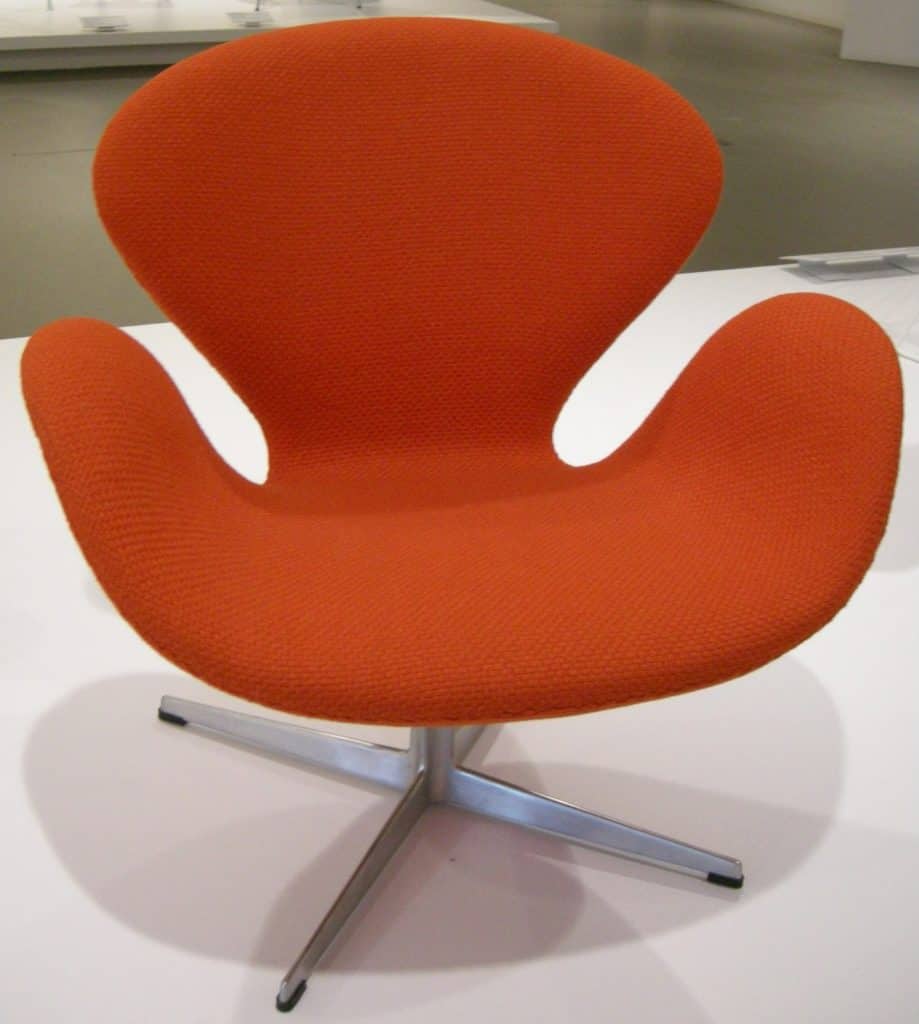Photography by Melinda Young Stuart Via Flickr
We value art of all forms — sculpture, mural, architecture, furniture, etc. — not only for aesthetics but for the story every piece holds. Take a moment and look around your home, or flip through your favorite interior design magazine. Every piece of decor underwent an intense process of design and holds a rich amount of history. Consider how many designers throughout history influenced the design of a “simple” barstool, armchair, or ottoman.
Tapping into this idea, let’s explore the most influential mid-century chairs and their original designers. The following five designers have influenced modern furniture for decades following the inception of each of their designs. As always, if this blog leaves you feeling inspired, reach out! Let’s continue the conversation.
Swan Chair — Arne Jacobson
Arne Jacobsen was a Danish architect and designer known for his contribution to architectural Functionalism, a movement that includes the Nordic “funkis” that is featured significantly in Scandinavian urban architecture. Throughout his career, Jacobson garnered success in his simple, practical, and sleek furniture designs.
Jacobson’s Swan Chair was originally designed as a specialty piece for the lobby and lounge areas of the SAS Royal Hotel (Copenhagen) in 1958. The chair is constructed of a synthetic mold, covered by a layer of foam, and upholstered in fabric or leather. The Swan design has been continually produced by Fritz Hansen since that time.
Eames Lounge Chair — Charles and Ray Eames
There are arguably no designers with a wider range of influence on 20th-century design than the powerhouse couple, Charles and Ray Eames. They are best known for their contributions to architecture, furniture design, industrial design & manufacturing, and the arts. They are among the wave of innovators who successfully brought unique mid-century designs to the masses through their use of modest materials and practical design.
When Charles and Ray met in 1941, they were merely coworkers. However, they quickly bonded and were married the following year, moving to Los Angeles shortly after. They experimented with wood-molding techniques and fiberglass, which resulted in a commission from the U.S Navy during World War II to produce plywood splints, stretchers, and experimental glider shells. In 1946, they began mass production of their molded plywood furniture to great public reception. In 2001, “Time” magazine named their molded plywood chair, known now as the Eames Chair, the “Best Design of the 20th Century”.
However, the most iconic piece designed by the duo – and perhaps the most iconic mid-century furniture design of all time – is the Model No. 670 Lounge Chair and Ottoman. The piece was originally designed in 1940 as a prototype and officially released on the market in 1956. The elegant lounge chair features rosewood and dark leather upholstery, for a timeless look.

Photography by Melinda Young Stuart Via Flickr
Bibendum Armchair —Eileen Gray
Take a look at the Bibendum Armchair here!
Eileen Gray, born in 1878, was an Irish architect, furniture designer, and pioneer of the Modern Movement in architecture. In some circles, Eileen Gray was the figurative “poster-child” for the 20th-century woman whose work is dismissed by a male-dominated culture. These days, her pioneering designs are revered! The New York Times claims “Gray is now regarded as one of the most influential architects and furniture designers of the last century.” His furniture designs used modern materials to form organic forms with perfect curves and elegant proportions.
The Bibendum chair below nods at Art Deco design with delicate scalloping and cylindrical curves. Gray’s 1925 design has stood the test of time with a balance of sophistication and playfulness.
Tulip Chair — Eero Saarinen
Saarinen was born on August 20, 1910, in Finland. He came from a talented family with famous parents – his father, Eliel Saarinen, an architect, and his mother, Loja Gesellius, a sculptor and textile artist. Eero Saarinen was a Finnish-American architect and industrial designer, and a pioneer bringing elements of exploration and experimentation to American architectural design during the 1950s. Known for his neo-futuristic style, he brought form and function together in unique ways capturing “an era of technology, of futurism, and of optimism.”
Saarinen revolutionized chair design with his single-legged Tulip chair and matching table. Designed and named after a tulip study stem, the chair features molded fiberglass and fabric upholstered cushions. The most common version of the Tulip chair has a red upholstered seat — from the right angle, the design reminds me of a small pour of red wine in a wine glass. Can you see it?

Photography by El gran sueño Via Flickr
Wassily Chair —Marcel Breuer
Marcel Lajos Breuer was a Hungarian-born modernist, architect, and furniture designer who’s known as being one of the “masters of Modernism”. Breuer was born in 1902 and began his career at the famous Staatliches Bauhaus, a German school of applied arts, architecture, and design. The Bauhaus was the most influential art school throughout the 20th century, its core objective was a radical concept: to reimagine the material world to reflect the unity of all the arts. While studying at the Bauhaus, Breuer “revolutionized the modern vocabulary with his tubular-steel furniture”.
The Wassily Chair, also known as the Model B3 chair, was designed in 1925-1926, while Breuer headed the cabinet-making workshop. The chair is constructed of seamless tubular steel and edges of black cowhide leather.

Photography by Kai ‘Oswald’ Seidler Via Flickr
We have only skimmed the surface of mid-century design’s most influential chair designs. If you are eager for more, browse my curated list of chairs, all available at Portland’s own Hive Modern.
Meet me back here for the second installment of this series! For regular updates on my blogs, newsletters, and modern home listings across Portland, follow my Instagram @modernhomesportland.









